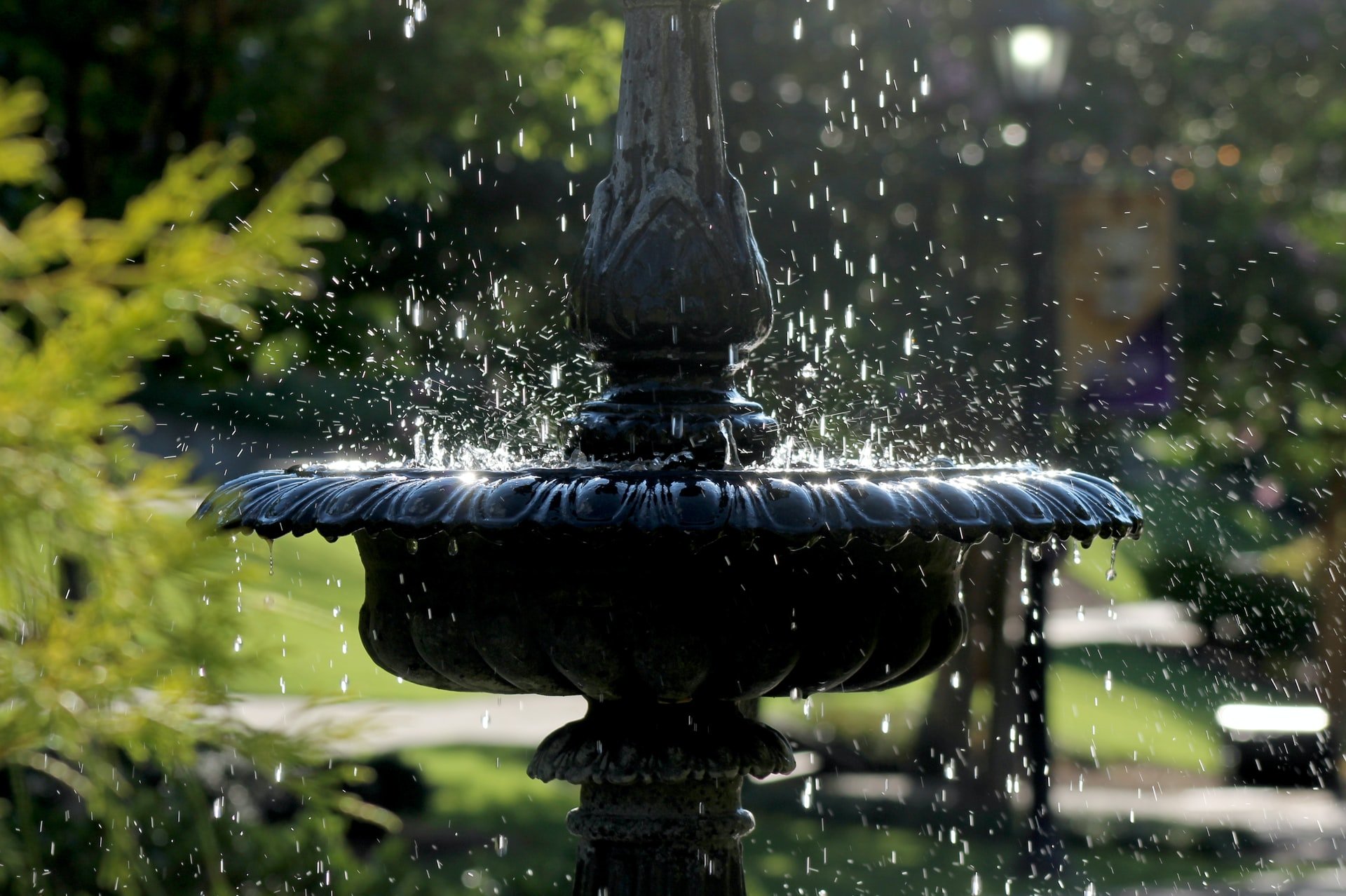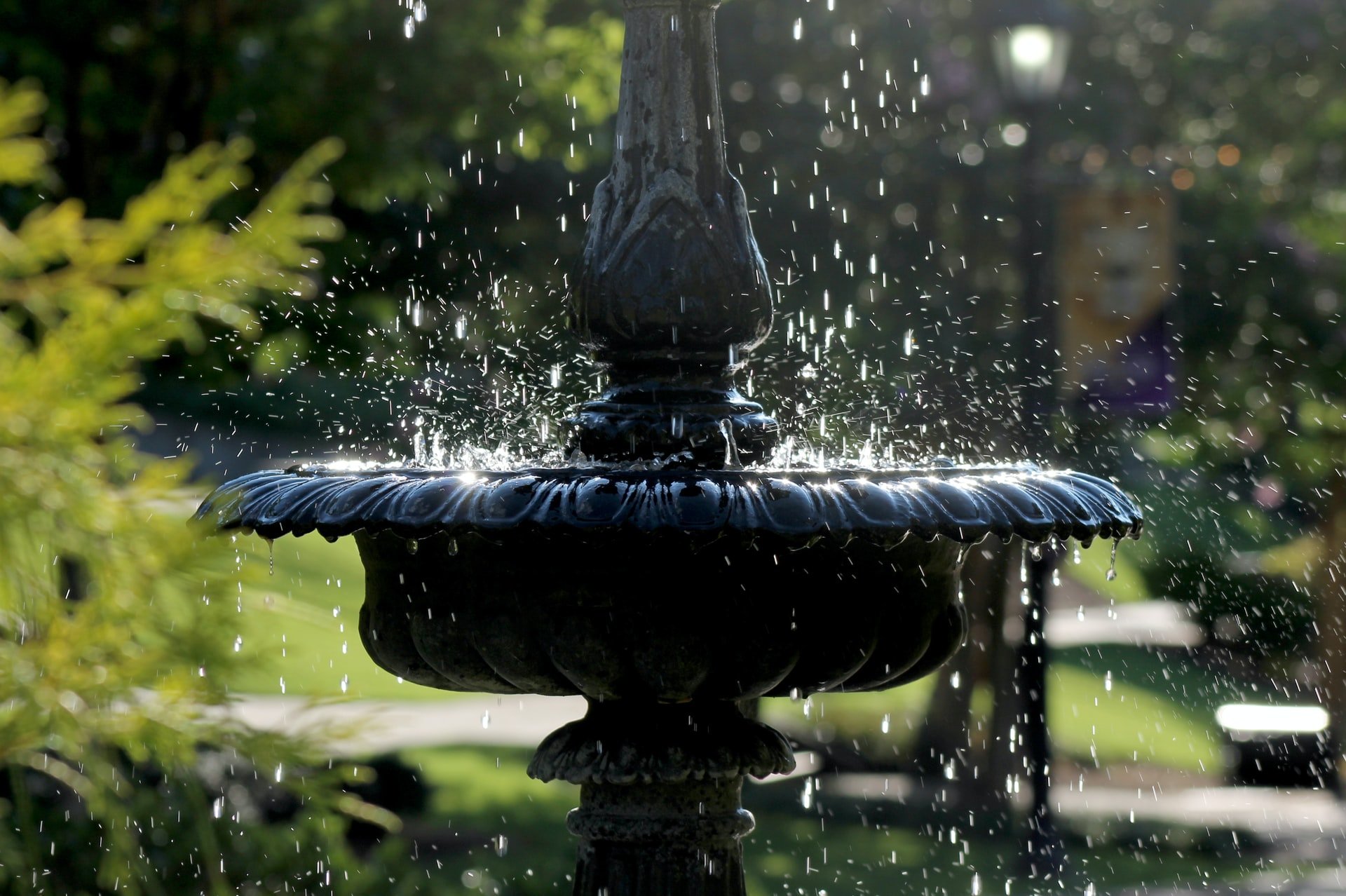
OK. Scenes of summer heatwaves the like of which newspaper front pages are made for, might be behind us now, however the change in season won't necessarily stop members of the general public from cavorting in fountains like London's Trafalgar Square; should the mood (if not the temperatures) take them. Besides which, there's any amount of appealing - and very iconic - water fountains found in many of the tourist hotspots around the planet, with Rome's Trevi fountain very much in-demand all year round.
Of course, it was those industrious Greeks and Romans who first invented the concept of basins which made use of a natural spring, while the first mechanically-operated water fountains became familiar in Italy during the 15th Century.
Fountains and Ornamental Water Features Are Everywhere Nowadays, Aren't They?
History lessons-aside, what many people today want to know is whether or not water fountains pose a risk to our health and wellbeing. At least, in terms of being a legionella threat. When you think about it, it's not a great leap of faith to imagine that such public attractions and society-gathering centrepieces might, potentially conceal a bacterial risk; given the volume of sprayed water which emits from these structures on a regular basis. And therein, possibly exposing vulnerable people to contaminated water droplets in the most inadvertent of scenarios.
However we shouldn't shy away from such situations playing out. Not when considering the number of public areas, gardens and even large indoor communal spaces which house decorative water fountains in this day and age. With sizeable, out-of-town shopping centres, being a prime example of the way in which fountains have multiplied in recent times. Hotels, business parks and even schools, libraries and public service buildings can easily comprise of the odd water fountain too, with the architectural fashion definitely witnessing something of a renaissance of late.
So, Do Water Fountains REALLY Pose a Significant Legionella Threat?
Together with other waterborne bacteria, legionella can represent a risk to public health, were it to be found lurking with intent within the water system that serves a fountain. And not to worry you too much, has the capacity to multiply at a disarming rate in both fountains and ornamental water features, per se. Providing the breeding conditions are advantageous though, let's remember. And to calm jangled nerves. And in the event of any instance of legionella not being identified and quickly treated by experts.
One of the most important elements which ensures that legionella bacteria can thrive in any water source, is its relationship with temperature change. And by that we mean if and when said water temps enter a legionella danger or Goldilocks zone as such. Of between 20 - 45 degrees Celsius. Unfortunately, the heat of the sun being in direct contact with water storage systems which serve fountains and ornamental water features do have a propensity to be exposed to the sun's rays, more especially if located outdoors.
I'm Responsible for the Maintenance of a Water Fountain in a Public Place. What Do I Need to Do/Be Aware of?
Having the responsibility of employee and/or public health very much top of your agenda, then it's imperative that you identify the potential dangers such water systems and infrastructure can pose from the outset. This way you can equip yourself with the knowledge required to subsequently take the appropriate steps to minimise the threat. And thus ensuring people's safety.
As we noted above, temperatures are key to the emergence and spread of legionella, and when a water fountain (or feature) is situated in the full glare of the sun or inside a building, then water can obviously heat up to within the 20 - 45 degree Celsius range we mentioned earlier.
In terms of guarding against the onset of legionella bacteria in such a public-facing environment, fitting a water pump is one of the core ways in which to work towards eliminating the threat. As a pump constantly circulating water will actively decrease the chance of stagnation in situ. That said, on the flip side of the coin, there's always the chance it may have the undesired effect of warming the water further, and ergo ramping up the risk.
Is the Water in a Fountain (or Ornamental Feature) Really That Stagnant?
Technically-speaking, not always. Yet stagnation would quickly become a clear and present danger in the eventuality of a water pump failure. That, or if the water feature is shut down for a certain consecutive passage of time, with winter months the most obvious time in mind.
What About the General Cleanliness of the Water in Fountains?
For the most part it's relatively obvious, in as much as what you see (in terms of stored/pumped/circulated water) is the level of hygiene you're dealing with at face value. So if your fountain is covered in green slime, sludge is visibly clogging up the pipework, the surface water is murky and/or giving off a foul aroma, then there's a reasonable possibility that waterborne pathogens - including the very real spectre of legionella bacteria amongst them - could result from these elements fusing together and diversifying within the stored water.
Is it True That Some Water Features Aren't as Risky as Others, When it Comes to Prospect of Legionella?
To a point, yes. And that's simply down to the underlying fact that some more decorative water-based features create excessively more movement of liquid than others, due to their design and USP. Fountains, it's fair to say, generate a lot more water, and therefore have the potential to be more far-reaching with regards to the spread of bacteria. Fountains, by their very definition, are constructed in such a way that they readily create a fine water mist or spray.
Should an individual more susceptible to lung conditions be exposed to (via inhalation of these fine water droplets which hang in the air in the vicinity of a fountain) contaminated water, then probability of developing Legionnaires' disease is theoretically increased. Essentially, this symbolises the most likely path to infection. Although it's also worth pointing out that a prominent wind could play a more pivotal part, sending contaminated water vapours further than the mist would travel were it less windy.
What's The Best Plan of Action to Protect Against Legionella Taking Root in Water Fountains and Features?
Two words, four syllables. Namely, 'risk assessment'. Scheduling and performing a thorough legionella risk assessment is the crucial starting point to make sure that you are being proactive in guarding against the threat of any form of waterborne bacterium. Followed closely by thrashing out and ratifying a robust water safety risk management programme to adhere to going forward.
Other pressing means include constant monitoring of equipment and infrastructure of the water system in question. By this we refer to on-going methods of controlling any buildup of scale and sediment first and foremost. Among various agents, which tackle scale in this arena, the likes of scale and corrosion inhibitors, dispersants, and biocides work best, while water treatment specialists champion periodic chlorination and descaling of cooling towers.







